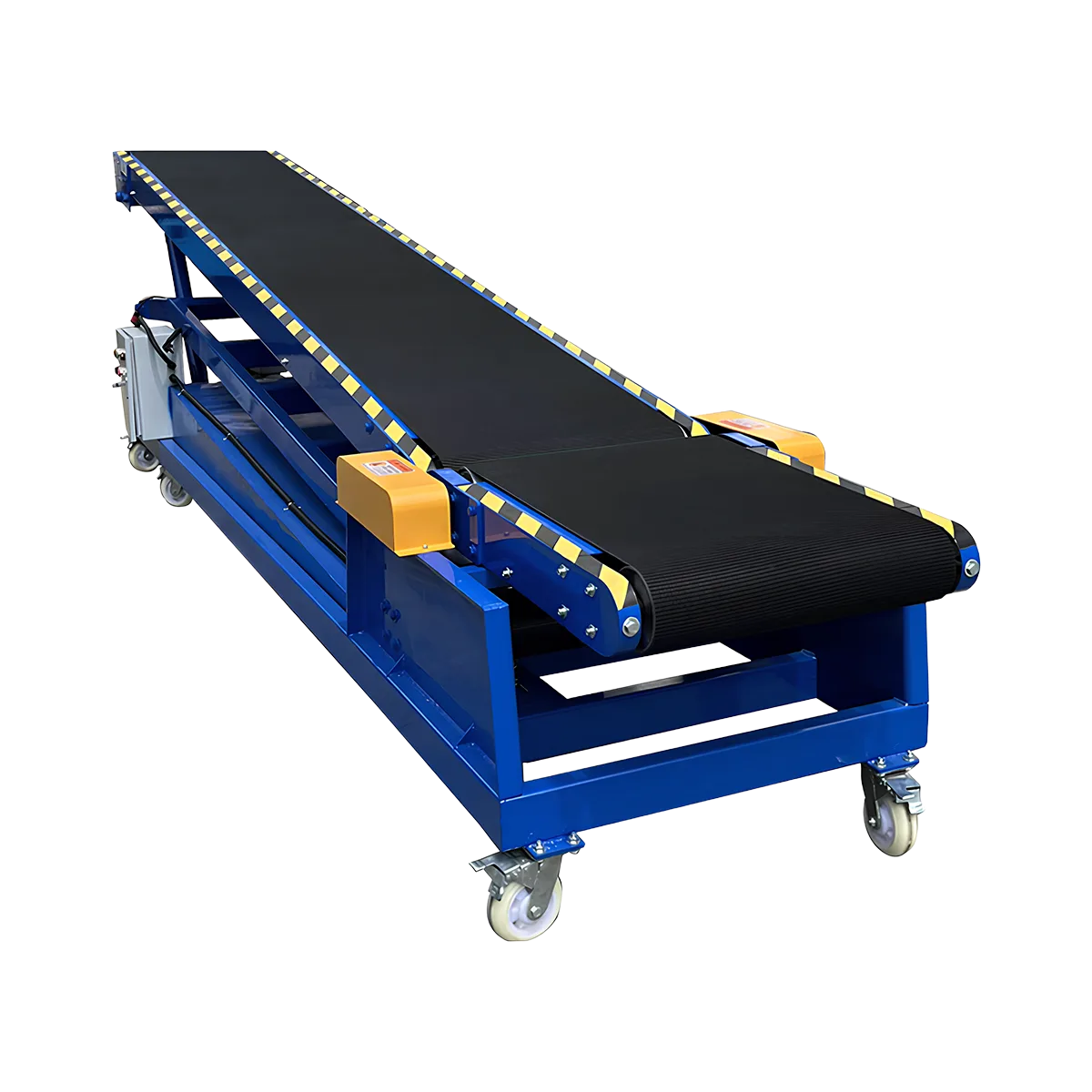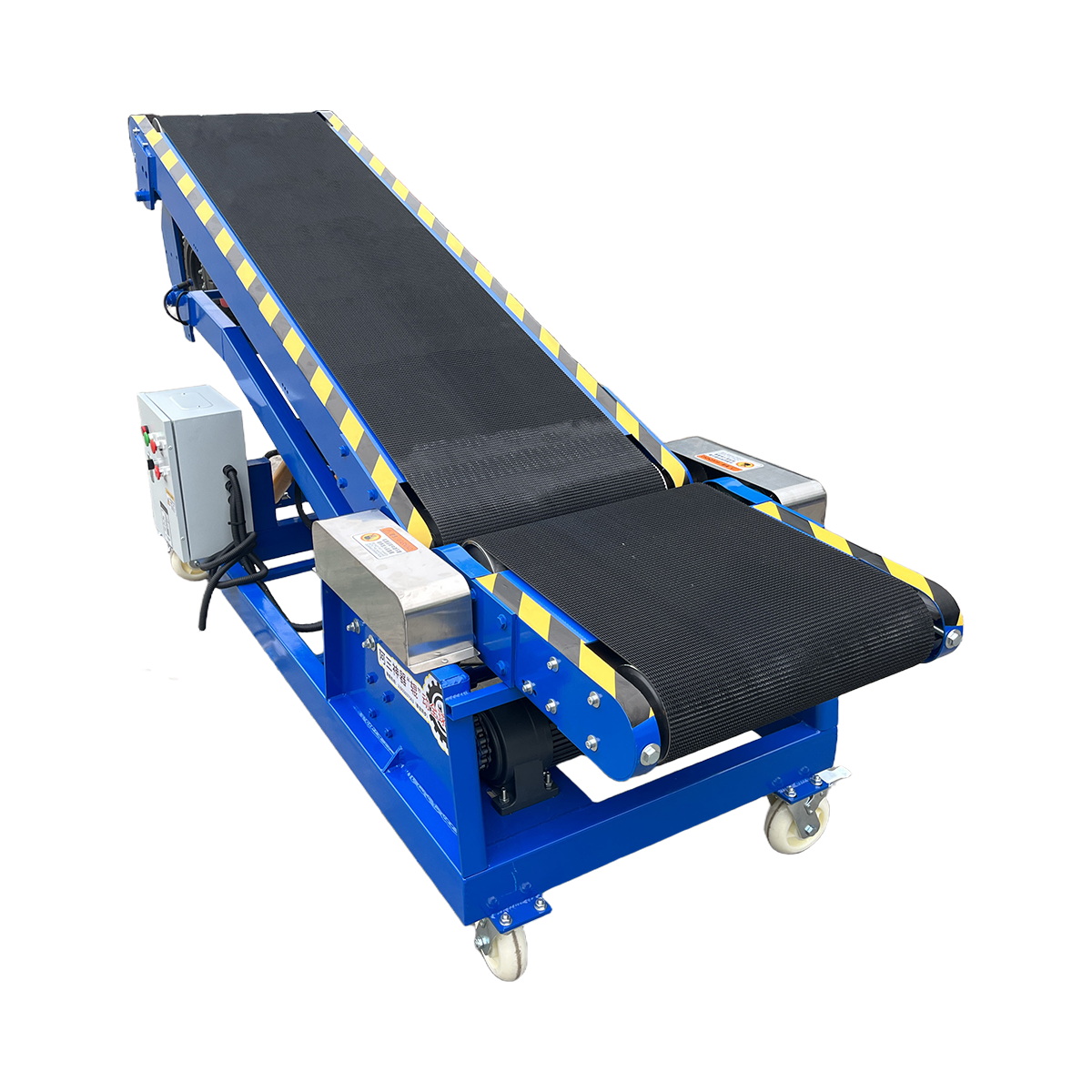How to Create a Loading Bay in a Rented Warehouse Without Construction
Learn how to set up an efficient no-construction loading bay solution in your rental warehouse logistics space using portable equipment that delivers professional results.
Related Products
-
Hydraulic Conveyor – Large – 7900 mm LengthCollapsed LengthExtended LengthLoad Capacity
80 kg/m
Applicable GoodsFlat-bottomed Goods
Bagged Goods
-
Hydraulic Conveyor – Medium – 7000 mm LengthCollapsed LengthExtended LengthLoad Capacity
80 kg/m
Applicable GoodsFlat-bottomed Goods
Bagged Goods
-
Hydraulic Conveyor – Small – 5400 mm LengthCollapsed LengthExtended LengthLoad Capacity
80 kg/m
Applicable GoodsFlat-bottomed Goods
Bagged Goods
-
Hydraulic Conveyor – Micro – 3700 mm LengthCollapsed LengthExtended LengthLoad Capacity
50 kg/m
Applicable GoodsFlat-bottomed Goods
Bagged Goods
Operating in a leased warehouse presents unique challenges, particularly when it comes to establishing efficient loading and unloading operations. For businesses in rental warehouse logistics environments, the inability to construct permanent loading docks can significantly hamper productivity. However, with the right approach and equipment, you can create a professional, high-throughput loading bay without any structural modifications to the property.
This guide provides a practical, step-by-step approach to establishing a temporary loading dock solution that rivals permanent facilities in effectiveness while preserving your security deposit and lease terms. By utilizing flexible, portable equipment, you can transform any standard door or access point into a fully functional loading bay that meets your operational needs.
Step 1: Create the ‘Dock’ with a Hydraulic Conveyor
The foundation of any effective no-construction loading bay begins with establishing the critical height differential between the warehouse floor and the truck bed. This is where the hydraulic conveyor becomes invaluable.
Selecting the Right Hydraulic Conveyor Model
When choosing a hydraulic conveyor for your temporary loading bay, consider:
- Available space – Measure the area where the equipment will be positioned
- Daily throughput – Evaluate your package volume requirements
- Truck types – Consider the variety of vehicles you’ll be loading/unloading
The hydraulic conveyor models offer different specifications suited to various operational needs:
| Model | Total Length | Maximum Height | Upper Support Capacity | Ideal For |
|---|---|---|---|---|
| Micro | 3700 mm | 1700 mm | Not applicable | Small delivery vans |
| Small | 5400 mm | 1820 mm | Up to 6 meters of conveyor | Trucks under 7.2m deep |
| Medium | 7000 mm | 2400 mm | Up to 10 meters of conveyor | Any container or truck |
| Large | 7900 mm | 2400 mm | Up to 12 meters of conveyor | Any container or truck |
Positioning and Setup
- Position the hydraulic conveyor at the truck door
- Connect to a standard power supply (typically 380V or 220V)
- Use the hydraulic lift controls to adjust the height precisely to the truck bed level
- Lock the heavy-duty casters (wheel width 50mm, height 200mm) to secure the unit in place
The hydraulic system provides 5 tons of lifting power, easily accommodating the weight of both the conveyor and your cargo. The PVC 5.0mm black grass pattern anti-slip belt ensures secure transport of packages without slippage, even when handling heavier items.
Step 2: Create the ‘Reach’ with Flexible Gravity Conveyors
With your dock established, the next step is to extend your reach into the truck for efficient loading and unloading. This is where gravity conveyor systems prove their worth.
Choosing Between Roller and Skate Wheel Options
Both gravity roller and gravity skate wheel conveyors can be mounted on the upper support frame of the hydraulic conveyor. Your choice depends on your specific cargo type:
- Gravity roller conveyor – Better for heavier items and varied package sizes
- 50mm diameter rollers support up to 50 kg/m
- Provides line contact with packages for better stability
- Ideal for uneven-bottomed packages
- Skate wheel conveyor – Excellent for lightweight packages with flat bottoms
- Features 1:5 extension ratio (extends from 420mm to 2100mm)
- Weighs less for easier handling and positioning
- More compact when collapsed for storage
Integration with the Hydraulic Unit
The hydraulic conveyor’s upper frame is specifically designed to accommodate these gravity systems:
- Place the gravity conveyor section onto the upper support frame
- Secure it using the integrated connection points (no tools required)
- Extend the conveyor into the truck to the desired depth
- Adjust the angle slightly downward to facilitate gravity-powered movement
For medium hydraulic conveyors, you can extend up to 10.5 meters of skate wheel conveyor or 4.5 meters of 50mm gravity roller conveyor. This extensive reach eliminates the need for workers to climb into trucks, significantly improving efficiency and reducing strain.
Step 3: Create the ‘Flow’ with a Connecting Line into the Warehouse
The final component of your temporary loading bay is establishing the continuous flow from the hydraulic conveyor into your warehouse space. This creates a seamless operation from truck to storage area.
Extending Your System with Additional Conveyor Sections
The bottom section of the hydraulic conveyor is designed to connect with standard height conveyor systems:
- For powered operations – Connect powered roller conveyor with 0.3-40 m/min adjustable speed
- For manual operations – Extend with additional gravity roller sections where appropriate
The modular nature of these systems allows for custom configurations including:
- Straight-line paths directly to storage areas
- 90-degree turns to navigate around obstacles
- Multiple branches to different processing stations
Optimizing the Layout for Efficiency
Consider these factors when planning your warehouse conveyor layout:
- Keep the path as direct as possible
- Maintain appropriate decline angles for gravity sections (typically 3-5 degrees)
- Position powered sections strategically to overcome flat or inclined areas
- Ensure adequate workspace around the conveyor for operators
A well-designed system allows packages to flow from the truck through the loading bay and directly to their destination within the warehouse with minimal manual handling. For operations processing over 1000 packages daily, such systems typically achieve return on investment within 6-12 months through labor savings and efficiency improvements.
Benefits of This Portable Loading Bay Solution
Implementing this portable truck ramp and conveyor system creates numerous advantages for businesses operating in leased spaces:
Operational Advantages
- Speed and efficiency – Process 2000-3500 packages per hour (depending on size)
- Labor optimization – Typically requires only 2 workers for operation
- Flexibility – Easily reconfigured as operational needs change
- Adaptability – Works with various truck heights and types
- Safety – Reduces manual lifting and associated injury risks
Business and Financial Benefits
- Lease compliance – No structural modifications means no landlord approval needed
- Preserved deposit – Eliminate concerns about property restoration costs
- Mobility – Equipment can move with your business to new locations
- Scalability – System can grow with additional sections as business expands
- Professional appearance – Projects capability and efficiency to customers and partners
Practical Example: Distribution Center Transformation
A mid-sized e-commerce fulfillment operation recently implemented this solution in their 5,000 square meter leased warehouse. Previously, they manually loaded/unloaded packages using makeshift ramps, processing approximately 1,200 packages daily with 6 workers.
After implementing the hydraulic conveyor system with gravity extensions:
- Daily throughput increased to 3,000+ packages
- Staff requirements reduced to 3 workers per shift
- Worker satisfaction improved dramatically
- Package damage rates decreased by 75%
- Loading/unloading time per truck reduced from 2.5 hours to 45 minutes
All this was achieved without any modifications to the leased property, and the equipment can be taken to their next location when their lease expires.
Maintenance and Care for Longevity
To ensure your temporary loading bay continues to perform optimally throughout your lease period:
- Daily checks:
- Inspect conveyor surfaces for debris
- Verify smooth operation of all moving parts
- Check hydraulic system for proper function
- Weekly maintenance:
- Clean conveyor surfaces thoroughly
- Inspect bearings and rollers
- Test emergency stop functions
- Monthly care:
- Check hydraulic fluid levels
- Inspect and tighten all connections
- Lubricate moving parts as recommended
- Quarterly service:
- Comprehensive inspection of all systems
- Address any wear issues proactively
- Clean and inspect electrical components
With proper care, these systems typically provide 5-10 years of reliable service, allowing you to utilize them through multiple lease periods or facility changes.
Conclusion: Professional Logistics Without Permanent Construction
Creating an efficient loading bay in a rented warehouse without construction is not only possible but can actually provide advantages over permanent installations. The flexible, modular approach using hydraulic conveyor for rent or purchase solutions combined with extensible gravity systems delivers a professional logistics setup that preserves your lease agreement while maximizing operational efficiency.
This approach demonstrates that temporary doesn’t mean compromised performance. With the right equipment and configuration, your rental warehouse can achieve the same throughput, efficiency, and professional appearance as facilities with built-in loading docks, all while maintaining the flexibility to adapt or relocate as your business needs evolve.
For operations handling over 1000 packages daily, these systems typically achieve return on investment within 6-12 months through labor savings and efficiency improvements, making them a sound business decision regardless of your lease situation.
Frequently Asked Questions
What power requirements are needed for a hydraulic conveyor system?
The hydraulic conveyor typically requires a standard three-phase 380V or single-phase 220V power supply. The system uses a 2.2kW hydraulic pump and a 750W conveyor belt motor. Always verify your warehouse’s electrical capacity before installation.
How many workers are needed to operate this temporary loading bay system?
Typically, a minimum of two workers is recommended – one at the loading point (often in the truck) and one at the unloading point. For high-volume operations, a third worker may be positioned at transition points for optimal efficiency.
Can this system handle heavy or oversized items?
The system can handle packages up to the specified weight capacity of the conveyor sections. Hydraulic conveyors support 50-80 kg/m depending on the model. For extremely heavy items (over 100kg), forklifts or other equipment may be more appropriate.
What happens if we need to move locations before our lease ends?
One of the primary advantages of this system is its portability. The entire setup can be disassembled, transported to your new location, and reassembled quickly. No components are permanently attached to the building, allowing for complete mobility.
How does the system adapt to different truck heights?
The hydraulic lift function allows adjustment from a minimum height of 700mm to a maximum of 1700-2400mm (depending on model). This range accommodates virtually all commercial delivery vehicles from small vans to full-sized tractor-trailers.
Table of Contents
Recent Posts
Optimize hardware store logistics with the right building supply conveyor systems. Our guide to tool distribution systems enhances retail warehouse automation for efficient operations.
Optimize your medical supply logistics with efficient gravity conveyor systems. Learn how to safely handle healthcare products while improving your hospital supply chain operations.
Discover how a sports equipment conveyor system can streamline your athletic gear logistics. Flexible conveyor solutions for all shapes and sizes of sporting goods.





